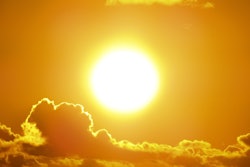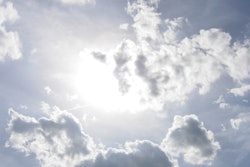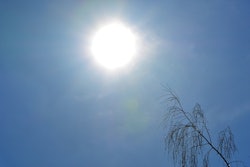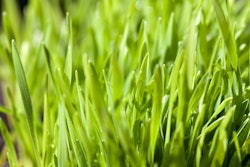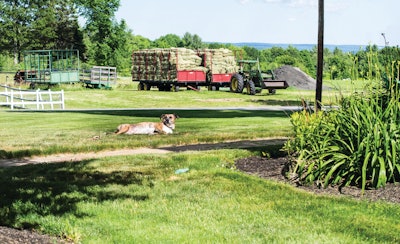
After an extended spring season that featured long periods of rainy weather, the summer is continuing the all-or-nothing trend. It’s been hot and dry in the northeast and green lawns are starting to turn brown under the stress. Here are a few suggestions on how to help keep your lawn looking its best.
Irrigation
Getting water on your lawn nourishes and cools the grass. It’s the first line of defense against hot, dry spells. The best time to water is early in the morning from 3-8 a.m. This allows the soil to soak up water needed and excess water will evaporate when the sun comes up. When a saturated lawn remains in contact with excess water it creates a breeding ground for disease. This is why watering in the evening can do more harm than good. If you water during the hottest part of the day, water is evaporating before it as the chance to absorb.
You also want to avoid watering by hand. Use sprinklers or irrigation systems to evenly water and connect timers for consistency. There are even smartphone apps that can operate irrigation controls. Generally speaking, most lawns want between 1-2 inches of water per week. This can vary based on soil and grass types, location, and time of growing season.
Deck heights and blades
Set your mower deck at three inches or greater. Taller grass can absorb water better and creates its own shade, too. Cutting too short not only stresses the plant, it prevents it from growing deep roots that could further protect from dry conditions.
Get a mulching blade and don’t bag the clippings. A mulching blade cuts the grass a few times before dropping it back into the lawn. The dry, starved lawn will appreciate the mulched clippings for added nutrients and shade.
Fertilizing
Unless you have an irrigation plan in place, don’t fertilize the lawn when the hot, dry conditions take hold. Fertilizers provide nutrients for growth, but without water you’re asking the lawn to do the impossible. Plus, fertilizers need to be watered in to be effective. If the product sits on the lawn for days only to be washed away in a thunderstorm/downpour, you might consider yourself lucky. The alternative would be fertilizer washed into lower areas and becoming super concentrated with the potential to harm grass.
Design
With lawn care, you can’t beat the heat—Mother Nature always has the upper hand. If drought and heat threaten your lawn each year, you might consider a new yard design. Consider adding trees to create shade, planting a drought tolerant type of grass, and even reducing the lawn size.



